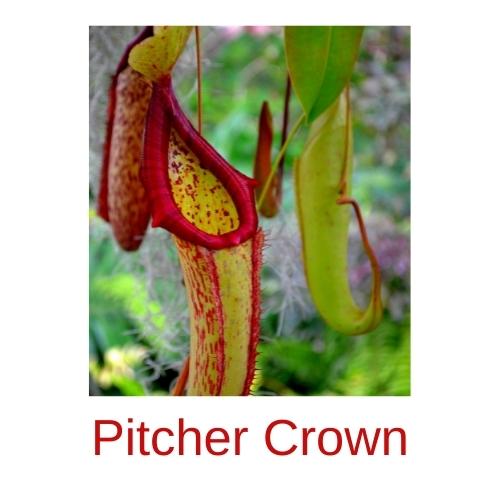As a pitcher plant lover, you take great pride in caring for your unique and delicate plants. While they are resistant to most pests and diseases, one of the biggest issues that plague the pitcher plant is disease and pest infestations. Knowing how to spot these potential problems early on can mean the difference between a healthy thriving garden full of beautiful plants and an annoying outbreak that’s hard to treat or control.
How to prevent pitcher plant diseases?
Preventing pitcher plant diseases isn’t as hard as it may seem! All that’s needed is a bit of knowledge and vigilance. Firstly, you should only buy pitcher plants from reliable sources to ensure they’re healthy when they arrive.
When transplanting the plant, make sure to use well-drained potting soil, as allowing the soil to become soggy can easily lead to fungal diseases. Secondly, be careful not to overwater your pitcher plant. Only keep it moist and let the soil dry out in between watering.
Also, make sure to avoid wetting the fragile leaves and flowers as they are particularly prone to fungal growth. Finally, try using organic fungicides or other treatments if mildew growth appears on your plant. With some extra attention, you’ll have a happy and healthy pitcher plant for years!
What are common pests of pitcher plants?
Common pests of pitcher plants include flies and small beetles. While pitcher plant species can be found around the world, the most vulnerable ones are those living in wetlands surrounded by dense vegetation.
Such an environment is a breeding ground for various insects that end up congregating around pitcher plants, treating them as an all-you-can-eat buffet. Different species of pitchers present their unique challenges for predators because their modified leaves come in various shapes and sizes which stimulate certain adapted behavior.
For example, some prey may be unable to escape from the rapidly closing petals or fall into slippery ridges at the bottom designed to make it difficult for them to climb back out.
What causes black spots on pitcher plants?
The black spots on pitcher plants are a mystery to many. Although there is no definitive answer, some scientists believe that these spots may help the plant absorb more sunlight, allowing it to photosynthesize more efficiently and therefore grow faster.
Additionally, the spots could be caused by a particular type of fungus, resulting from stagnant water and poor air circulation within the pitchers. This coincides with the theory that symbiotic fungi aid in protecting the plant from insects or other pests.
Lastly, some researchers hold that these spots are simply genetic mutations playing out over time; however, until further studies are carried out there is no way of definitively knowing what causes these black marks on pitcher plants.
How to treat pitcher plant fungus?
Caring for pitcher plants can be tricky, especially when a fungus appears. Luckily, treating it is relatively easy! The best way to give your plant a fighting chance is to use a fungicide that’s labeled safe for carnivorous plants as soon as you notice signs of infection.
Then, remove any infected leaves and discard them away from the main pitcher plant. Additionally, washing off the plant with soapy water can help get rid of any lingering spores.
Lastly, keep the environment around your plant clean and free of debris or possible pests – these are things like fallen leaves – that might have harbored the infection in the first place. With these tips in mind, you’ll be sure to help keep your pitcher plant looking its best!
How to get rid of aphids on pitcher plants?
Got aphids on your pitcher plant? No need to worry – with a few simple steps you can get rid of these nasty little buggers and have your plant looking as good as new! First, start by snipping off any affected leaves and discarding them away from the affected area – that’s the first step in stopping the spread.
Then use either an oil spray, diluted soapsuds, or rubbing alcohol to get rid of those pesky aphids for good. Be sure to apply directly to the stems and other parts of the plant where you see bug activity – this will help kill off any remaining critters.
Finally, give it a few days while keeping an eye out for new infestations so you can take action quickly if necessary. By following these steps, you can say goodbye to that pesky pest and be on your way to a happy and healthy pitcher plant in no time!
What are the signs of pitcher plant rot?
When it comes to pitcher plants, the signs of rot can sometimes be hard to catch. But, with a bit of observation and knowledge, you’ll be able to detect it early before it develops into an even larger problem.
If your plant is wilting more than usual, signaling a lack of water intake, this might be one sign that your pitchers have been infected by rot. Additionally, if your leaves start changing color from vibrant green to yellowish-brown streaks, this could very well be another sign that there’s something wrong.
Finally, if you spot blackened spots around the edges or downy mold growing along its stalk or leaves; these are sure-fire warning signs that your pitchers might need some extra help to recover properly.
Conclusion
Despite their hardy nature, pitcher plants can be prone to a few common issues from time to time. Understanding what problems might arise with your plant can help you diagnose and treat them accordingly. Keeping accurate records of the various stages of growth for your plant will also assist in diagnosing any potential problems. Long-term maintenance is essential when caring for a pitcher plant, involving frequent checks for possible signs of infection, changes in the environment, or other issues.








